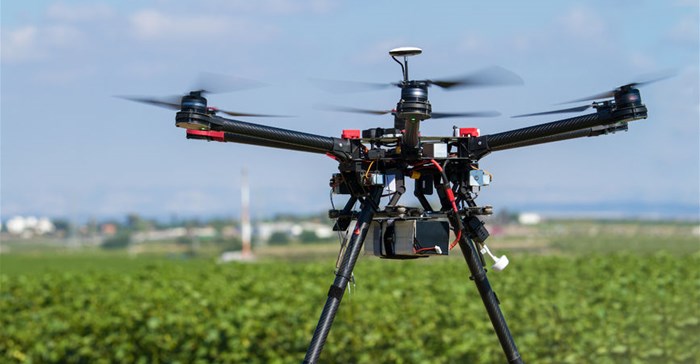Drones: keeping a watchful eye on Africa

Mostly found in military and special operation applications, UAVs are increasingly finding uses in civil and recreational applications. Dating back to the early 20th century, drones initially provided practice targets for training military personnel. Their development moved into high gear for combat missions during the conflicts in Vietnam and the Middle East.
A typical drone weighs no more than 25kg, travels at a speed of 160km per hour and can fly to a height of 150 metres.
Drones are being used in Africa today to track poachers; to gather vital agricultural information to help farmers with their crops; and as an intelligence tool to help the military anticipate and prepare against danger.
For the endangered elephants in the Congo region of sub-Saharan Africa, drones could just help end the current elephant and rhino poaching crisis. In a 2015 test by Air Shepherd Technology, a US-based non-profit organisation, in partnership with the Lindbergh Foundation, drones were found to be effective in spotting poachers and alerting nearby rangers over giant areas of parkland.
About 20,000 elephants were killed in 2014 alone, according to the Convention on International Trade in Endangered Species of Wild Fauna and Flora (CITES), a non-profit group, and there are fears that the death toll could rise in the coming years. In many areas park rangers are incapable of covering big swaths of the park.
In an article for the magazine National Geographic, Oliver Payne writes that drones can complement the efforts of park rangers and others to provide comprehensive poaching data. “New data is acquired daily from drones, tour operators, rangers on patrol, and GPS collars on individual animals. In aggregate, the analytics reveal patterns of poaching attacks and can predict with 90% accuracy where poachers will strike.”
In addition to saving the lives of elephants and rhinos, the drone technology is being tested in Uganda and parts of Europe to deliver vital agricultural information to farmers through high-resolution pictures. Such information includes exact acreage of land and what portions of the land are under- or overused.
Although some farmers can also rely on satellite imaging, drones have better capabilities because they fly closer to the land and can bypass visual obstructions such as tree canopies and clouds to get high-resolution pictures.
The International Potato Centre (CIP), a Peru-based organisation that focuses on food security in the developing world, conducted drone tests in January on potato farmlands in Tanzania. The drones captured images of 14 varieties of sweet potatoes, as well as detected diseases that can potentially destroy the crops.
Drones are also increasingly being used to monitor conflict areas around the world. Currently the United Nations plans to use drones for surveillance purposes in war zones in sub-Saharan Africa. Experts believe that drones can identify pertinent information, including the details of tyre treads, license plates and even bullets, all of which are vital for troops’ operational preparedness.
A UN expert panel on technology and innovation reports, “The capacity of aerial visualisation is coming to everyone, in every setting — agriculture, disaster response, conflict — and we say that the member states need to take a look at empowering peacekeeping missions more broadly as part of an overall orientation towards technology to strengthen their hand.”
Despite their often useful purposes, drones come under strict and in some cases prohibitive regulations in Africa. Countries that regulate drones include Kenya, Namibia and South Africa, although the rules are often muddy.
In South Africa, drone rules enacted in 2015 impose a 10-year jail sentence for illegal drone use — and are considered by some residents as unfriendly to private development.
A total ban on drones for civilian use was imposed by Kenya in January 2015. In Nigeria, however, the government intends to incorporate drone technology into existing security systems for efficiency, while also seeking the support of the international community to help combat insecurity of the country’s waterways.
It was not long ago that drones were a figment of a science fiction writer’s imagination, but now they have gained popularity.
Source: Africa Renewal





















